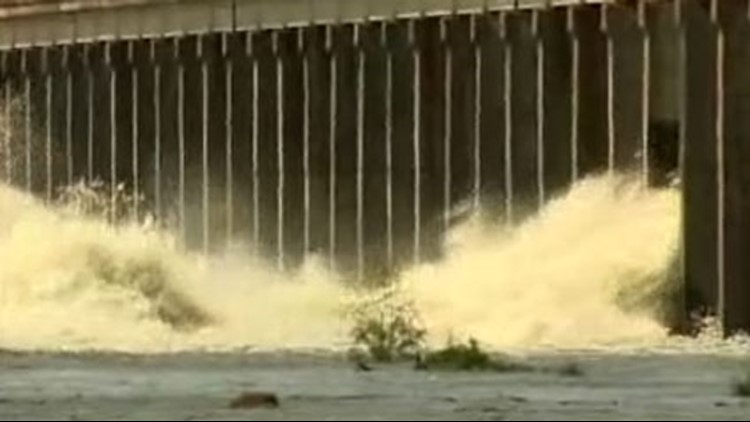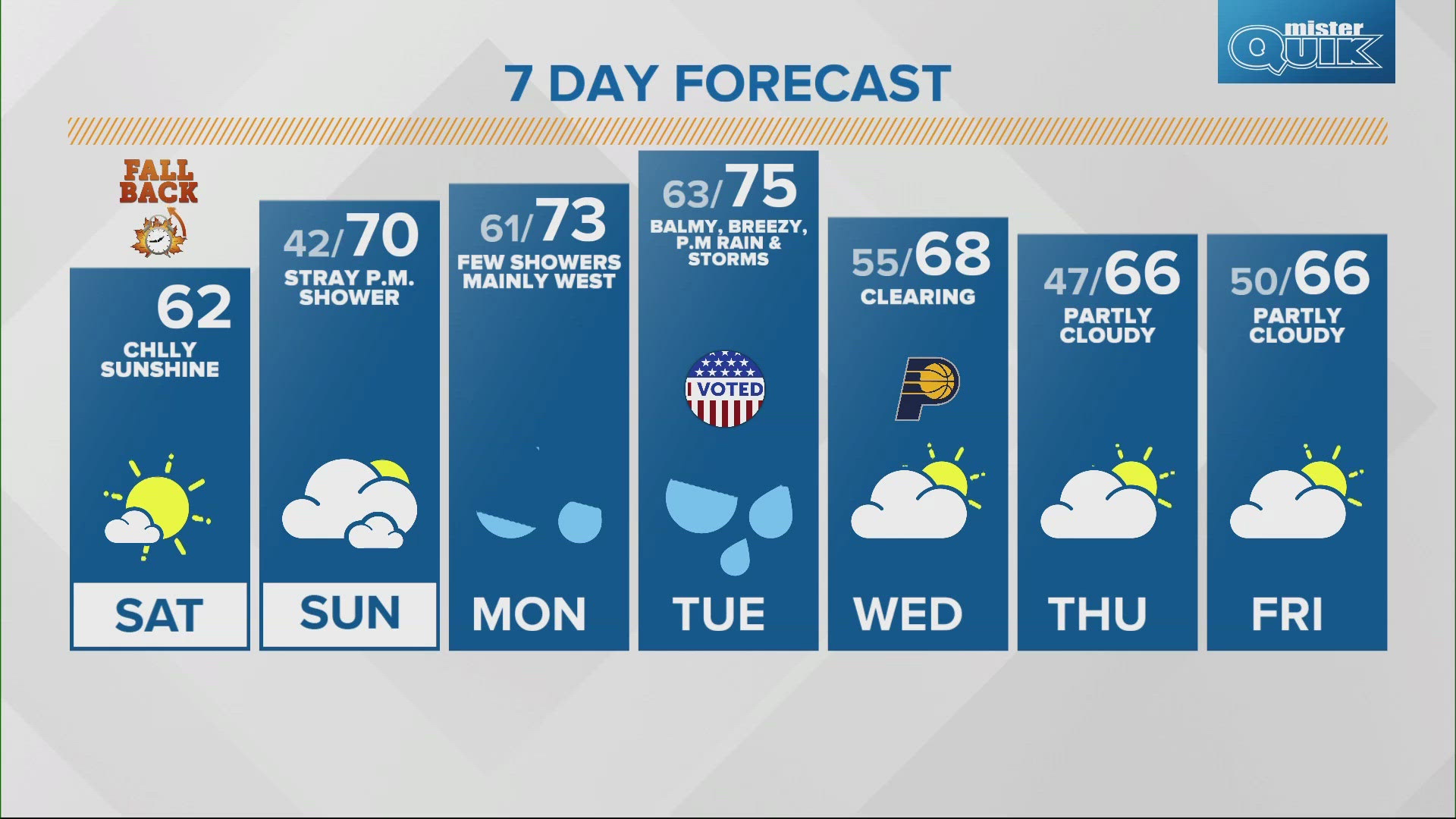MORGANZA, La. - Water from the inflated Mississippi River gushed through a floodgate Saturday for the first time in nearly four decades and headed toward thousands of homes and farmland in the Cajun countryside, threatening to slowly submerge the land under water up to 25 feet deep.
As the gate was raised, the river poured out like a waterfall, at times spraying 6 feet into the air. Fish jumped or were hurled through the white froth and within 30 minutes, 100 acres of what was dry land was under about a foot of water.
The opening of the Morganza spillway diverted water from Baton Rouge and New Orleans, and the numerous oil refineries and chemical plants along the lower reaches of the Mississippi. Shifting the water away from the cities will ease the strain on downriver levees and thwart potential flooding in New Orleans that could have been much worse than during Hurricane Katrina.
"We're using every flood control tool we have in the system," Army Corps of Engineers Maj. Gen. Michael Walsh said during a news conference on the dry side of the spillway, before the bay was opened.
The Morganza spillway is part of a system of locks and levees built following the great flood of 1927, which killed hundreds and left many more without homes. When the Morganza opened Saturday, it was the first time three flood-control systems have been unlocked at the same time along the Mississippi River, a sign of just how historic the current flooding has been.
Earlier this month, the corps intentionally blew holes into a levee in Missouri to employ a similar cities-first strategy, and it also opened a spillway northwest of New Orleans.
Snowmelt and heavy rain swelled the Mississippi, and the river has peaked at levels not seen in 70 years.
In Krotz Springs, La., one of the towns in the Atchafalaya River basin bracing for floodwaters, phones at the local police department rang nonstop as residents sought information on road closings and evacuation routes.
Like so many other residents downstream of the Morganza, Monita Reed, 56, recalled the last time it was opened in 1973.
"We could sit in our yard and hear the water," she said as workers constructed a makeshift levee of sandbags and soil-filled mesh boxes in hopes of protecting the 240 homes in her subdivision.
Low-lying areas of St. Landry Parish south of U.S. Highway 190 have been put under a mandatory evacuation order. St. Landry Parish President Don Menard said the order takes effect at 7 a.m. Sunday and includes areas within the Atchafalaya River Basin, which is expected to flood.
About 25,000 people and 11,000 structures could be affected by the oncoming water, and some people living in the threatened stretch of countryside - an area known for fish camps and a drawling French dialect - have already fled. Reed's family packed her furniture, clothing and pictures in a rental truck and a relative's trailer.
"I'm just going to move and store my stuff. I'm going to stay here until they tell us to leave," she said. "Hopefully, we won't see much water and then I can move back in. "
It took about 15 minutes for the one 28-foot gate to be raised in the middle of the spillway. Several hours will pass before any of the water hits sparsely populated communities, but residents nearby have been told to go.
The corps planned to open one or two more gates Sunday in a painstaking process designed to give residents more time to prepare, as well as allow wildlife a chance to stay dry.
The water will flow 20 miles south into the Atchafalaya Basin. From there it will roll on to Morgan City, an oil-and-seafood hub and a community of 12,000, and eventually into the Gulf of Mexico.
Michael Grubb, whose home is located just outside the Morgan City floodwalls, hired a contractor this week to raise his house from 2 feet to 8 feet off the ground. It took a crew of 20 workers roughly 17 hours to jack up the house onto wooden blocks.
"I wanted to save this house desperately," said Grubb, 54. "This has tapped us out. This is our life savings here, but it's worth every penny."
Three feet of water flooded Grubb's home the last time the Morganza spillway was opened.
Water from the swollen Atchafalaya River already was creeping into his backyard, but Grubb was confident his home will stay dry. He has a generator and a boat he plans to use for grocery runs.
"This is our home. How could we leave our home?" he said.
The water came perilously close to overtopping Morgan City's floodwalls in 1973. Since then, they have been raised to 24 feet and aren't expected to be overtopped, but officials have filled sandbags to shore up the levees. The water was expected to reach Morgan City around Tuesday.
"These levees will be under a lot of pressure for a long period of time," said Corps Col. Ed Fleming.
The crest of the Mississippi was still more than a week away from the Morganza spillway, and when it arrives, officials expect it to linger. The bulge has broken river-level records held since the 1920s in some places as it rolled down the river, and prompted the corps to take drastic steps to protect lives.
The corps blew up a levee in Missouri - inundating an estimated 200 square miles of farmland and damaging or destroying about 100 homes - to take the pressure off floodwalls protecting the town of Cairo, Ill., population 2,800.
The Morganza flooding is more controlled, however, and residents are warned by the corps each year in written letters, reminding them of the possibility of opening the spillway, which is 4,000 feet long and has 125 bays.
At the site of the spillway, water splashed over the gates on one side before a vertical crane hoisted the 10-ton, steel panel to the let water out. Typically, the spillway, built in 1954, is dry on both sides.
This is the second spillway to be opened in Louisiana. About a week ago, the corps used cranes to remove some of the Bonnet Carre's wooden barriers, sending water into the massive Lake Ponchatrain and eventually the Gulf of Mexico.
By Sunday, all 350 bays at the 7,000-foot Bonnet Carre structure were to be open. The Morganza was expecting to only open up about a quarter of its gates.
The spillways could be opened for weeks, or perhaps less time, if the river flow starts to subside.
In Vicksburg, Miss., where five neighborhoods were underwater, a steady stream of onlookers posed for pictures on a river bluff overlooking a bridge that connects Louisiana and Mississippi. Some people posed for pictures next to a Civil War cannon while others carried Confederate battle flags being given away by a war re-enactor.
Vicksburg was the site of a pivotal Civil War battle and is home to thousands of soldier graves.
James Mims, 50, drove about an hour from Calhoun, La., with his wife, son and three grandchildren to snap a photo.
"It's history in the making, and we're seeing it happen," Mims said.
(Copyright 2011 Associated Press. All rights reserved. This material may not be published, broadcast, rewritten, or redistributed.)



